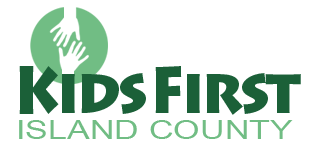Who Are the Children in Foster Care?
Children in foster care are regular kids—but life has been especially hard on them. They may have endured abuse and/or neglect, and are in foster care to be protected. Children remain in foster care while their birth parents access resources that help them provide safe, stable, nurturing home environments.
As of 2023, nationwide there are over 391,000 children and youth in foster care. Mental and behavioral health is the largest unmet health need for these children and teens.1 There are around 10,000 children are placed in out-of-home care in Washington State with less than 5,000 licensed foster care homes available2.
In Island County, there were 40 children in foster or relative care in 2022, with 70% of new cases being children who were 5 years old or younger.

When a child experiences abuse or neglect and is determined to be unsafe in their home, a social worker will come and inform the child that they will be leaving to go somewhere safe. This is often urgent, with no time to prepare. A social worker does their best to pack some clothing and belongings into a small bag, often this is simply a garbage bag, and then transports the child to their foster home. In some cases this is a state licensed home, in other cases it is the home of a relative or close family friend.
Sometimes this means living apart from their siblings, or living far away from familiar friends, school, or neighborhoods. Some children face multiple placements, changing homes several times, often without explanation given to the child. For children, this change most often happens by surprise, without notice, explanation, or opportunity to prepare.
Within 72 hours of a child’s removal from home, there is a Shelter Care Hearing to determine whether the child’s home environment meets minimally sufficient standards for child safety and well-being. Often, parents need a great deal of time and support before they are able to provide safe, stable home environments. This can keep a child waiting a year, or even longer.
That is when a child becomes a Dependent of Washington State. That is when it becomes our collective responsibility to protect them and to tend their well-being. (RCW.26.44).
Upon a child’s out-of-home placement, Washington state grants one small voucher to help with the immediate, short term needs of the child. But all too soon, babies run out of diapers and children outgrow their clothing, often faster than foster parents can keep up with. The Child Welfare Information Gateway explains that, despite receiving some financial assistance, “families are still responsible for everyday financial obligations.”3 Some children also have more specialized needs, such as needing a more costly specialty formula, eyeglasses, or medical equipment. If the child is taken in by a family member without a foster care license, there is far less financial assistance available.
If it is determined that the child’s birth parents will need significant time to establish a safe and secure home environment, the child will then become a Dependent of the State and may remain in foster care for 18 months or more while they wait to be reunited with their family or, if reunification is not possible, they will await a “forever family” willing to adopt them.
SO MANY OPPORTUNITIES AND EXPERIENCES THAT ARE A TREASURED PART OF CHILDHOOD, SIMPLY AREN’T FEASIBLE FOR CHILDREN IN FOSTER CARE.
MYTH: FOSTER PARENTS ARE JUST IN IT FOR THE MONEY.
Fact: Foster parents receive very little to help with the costs of raising a child. They receive enough for only the bare minimums. The amount they receive only covers about 55-67% of the cost of raising a child, depending on the age of the child.
Relative caregivers, without a foster care license, receive very little in the way of financial assistance from the State.
MYTH: A CHILD CAN END UP IN FOSTER CARE BECAUSE THEY ARE DELINQUENT OR “OUT OF CONTROL”.
Fact: Children only enter foster care due to experiencing abuse and/or neglect from their parents that threatens their safety. Children in foster care are never there because they are “bad”.
The children in foster care are just like any other child, but they have experienced great hardship. They are just as in need of love, encouragement, laughter, and joy!

